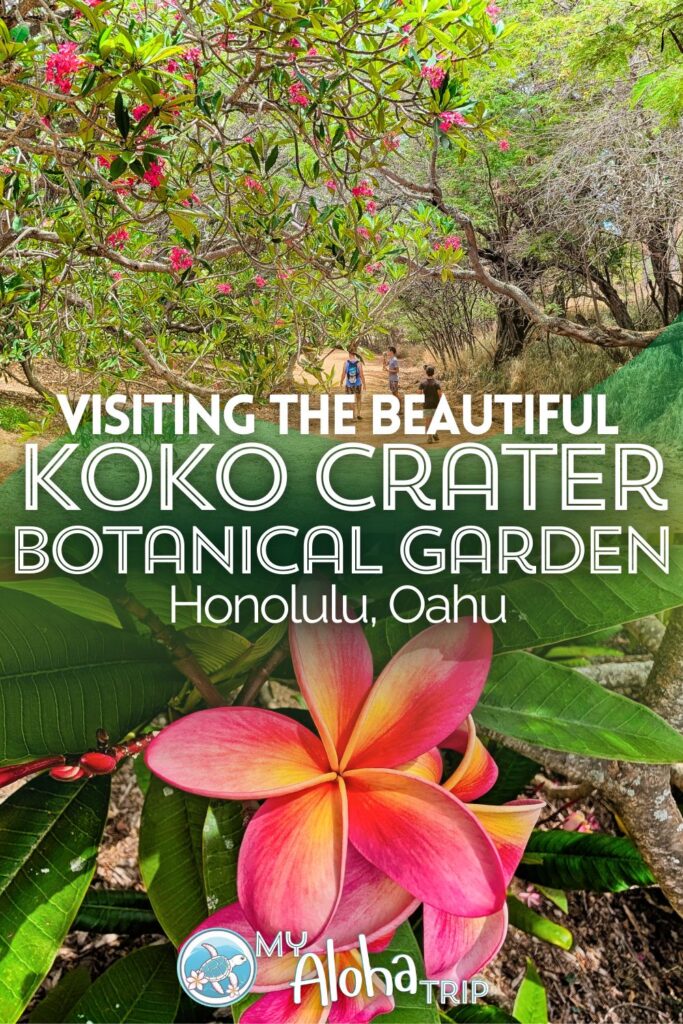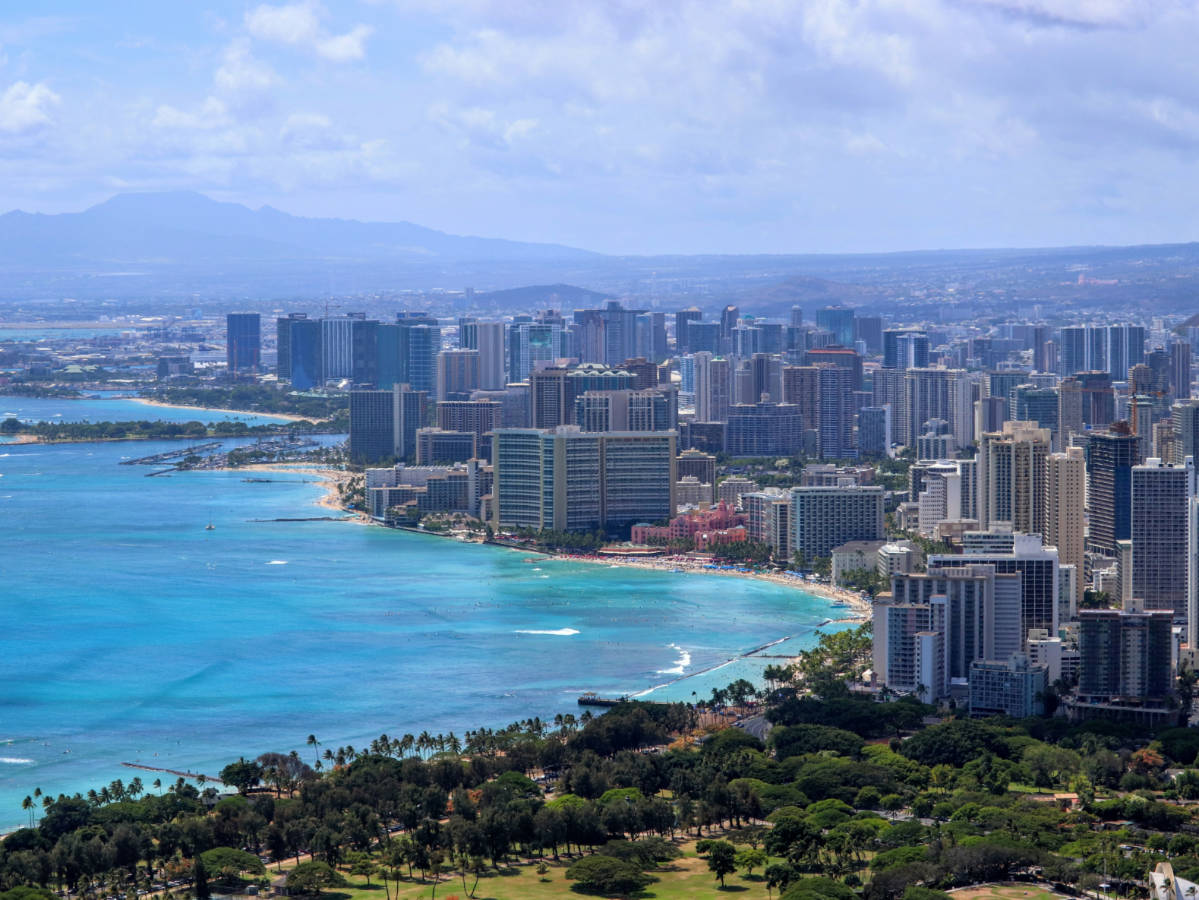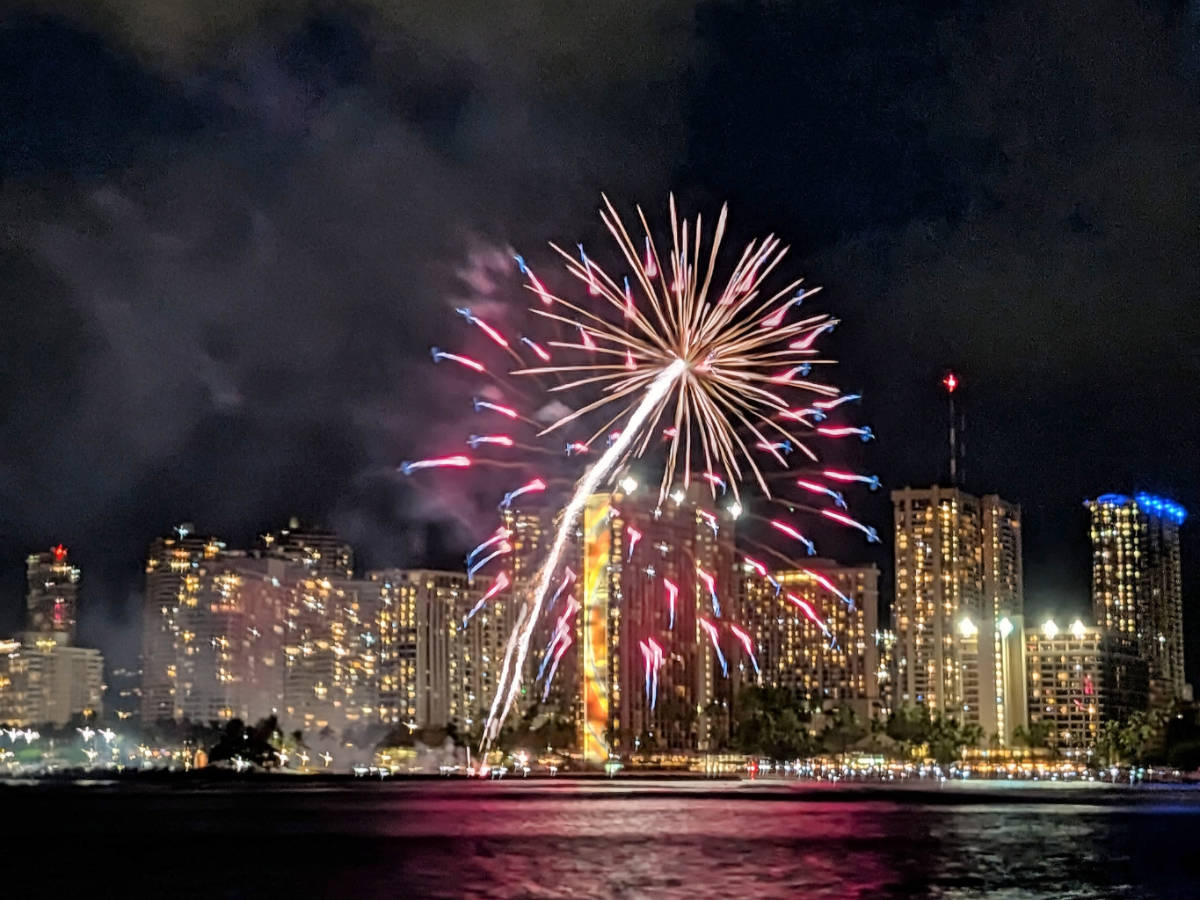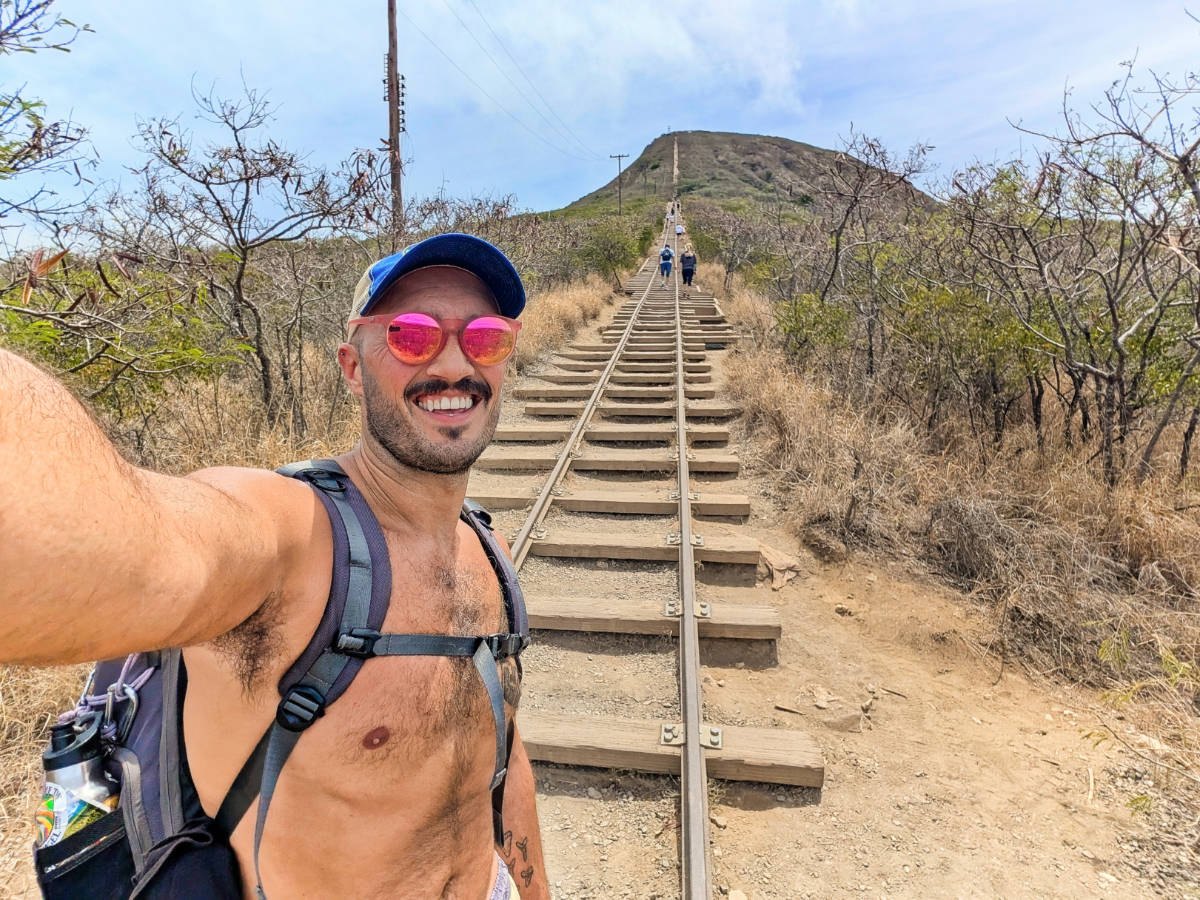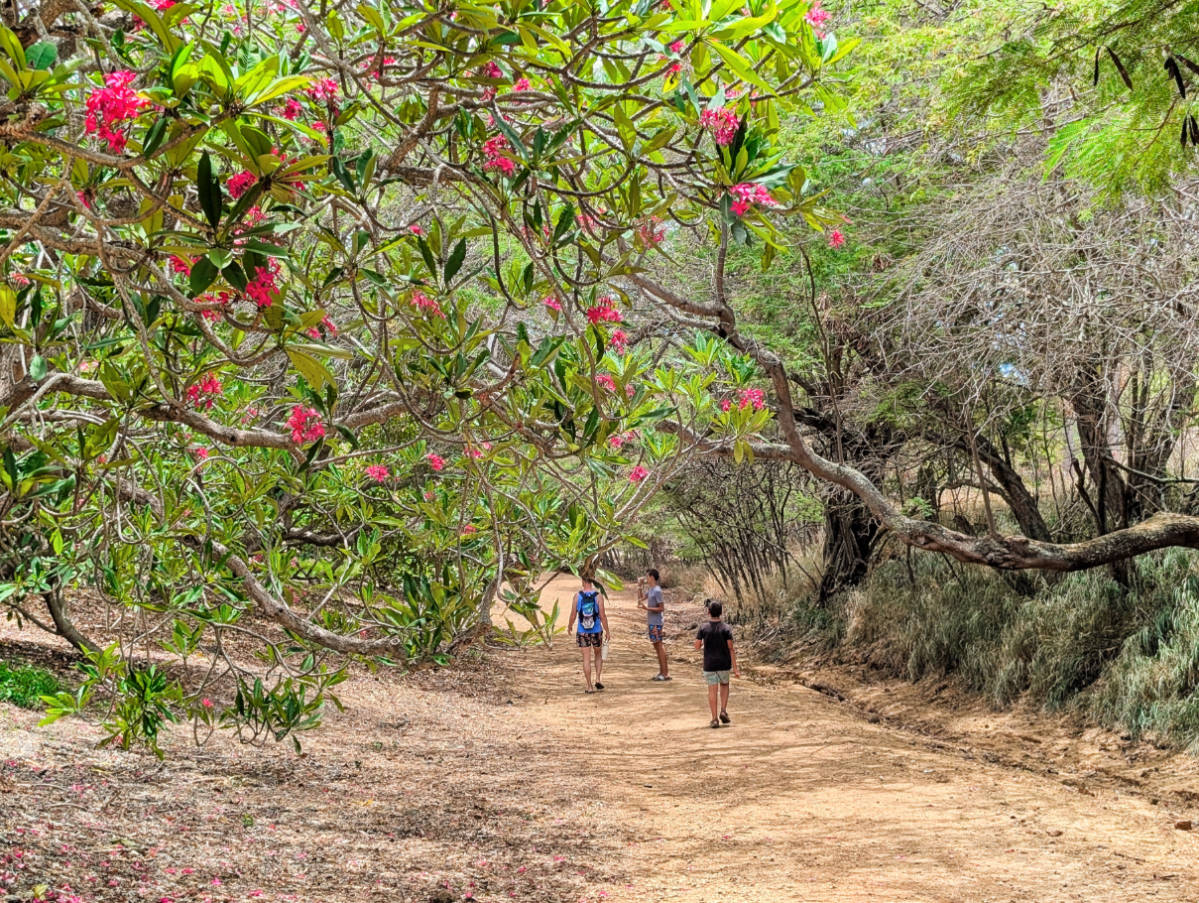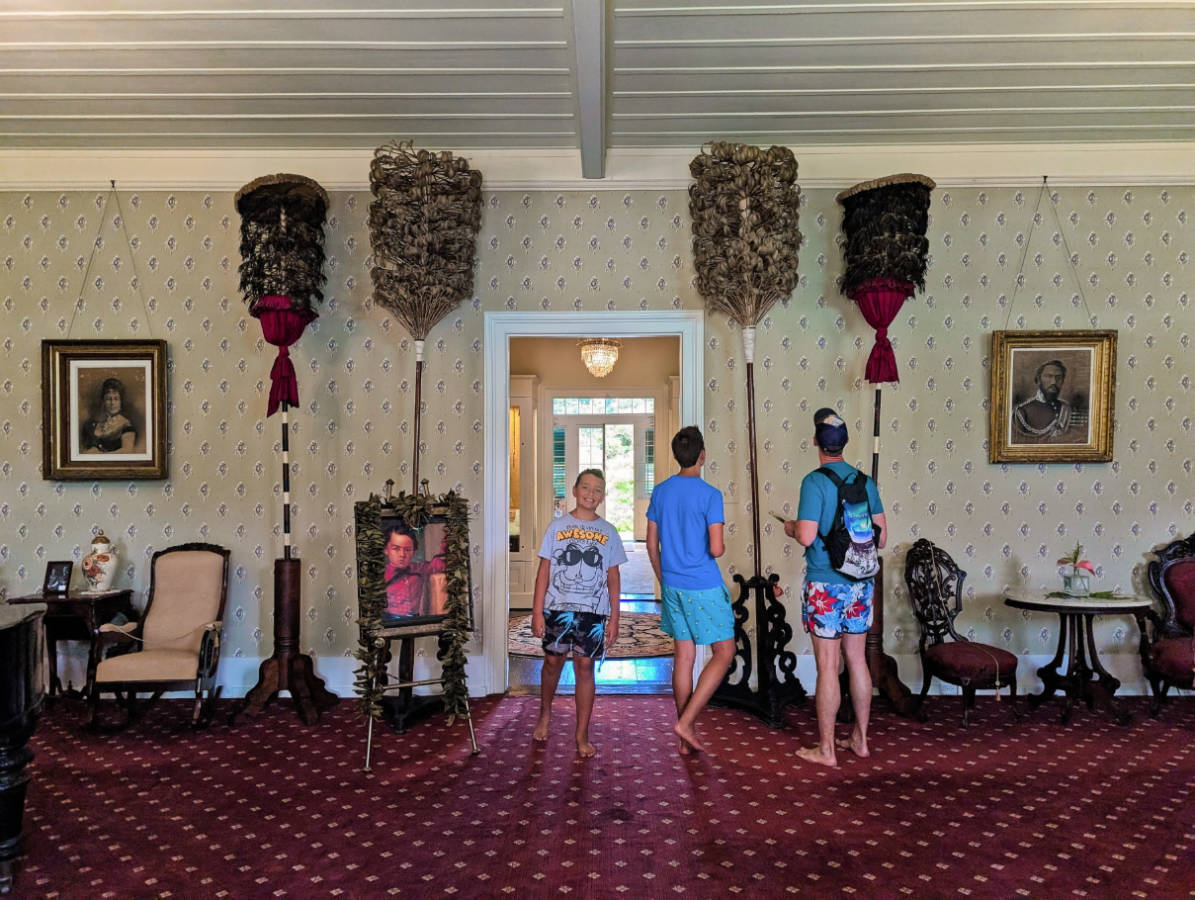There are quite a few botanical gardens on the island of Oahu, and in Honolulu there are actually quite a few. The Koko Crater Botanical Garden is a wonderful overlooked gem. located just east of Honolulu and just passed Hawaii. the Koko Crater Botanical Garden is free and open to the public and has some wonderful walking trails. It’s not your regular botanical garden, but is set up as a beautiful, sprawling natural-state garden all within the Koko Crater. If you like the Koko Crater railway Trail, you actually get to look down into the Koko Crater Botanical Garden.
Are you looking for a beautiful place to go walking when you’re visiting Honolulu? if so, Koko Crater Botanical Garden should be at the top of your list. we’ve got the full scoop on what you’ll find inside the crater and tips for visiting both here and other beautiful places nearby. if you have any questions about this part of Honolulu or the botanical garden itself, please leave a comment or send us a note. We’re always happy to share more info and experiences to help you plan a great Aloha trip.
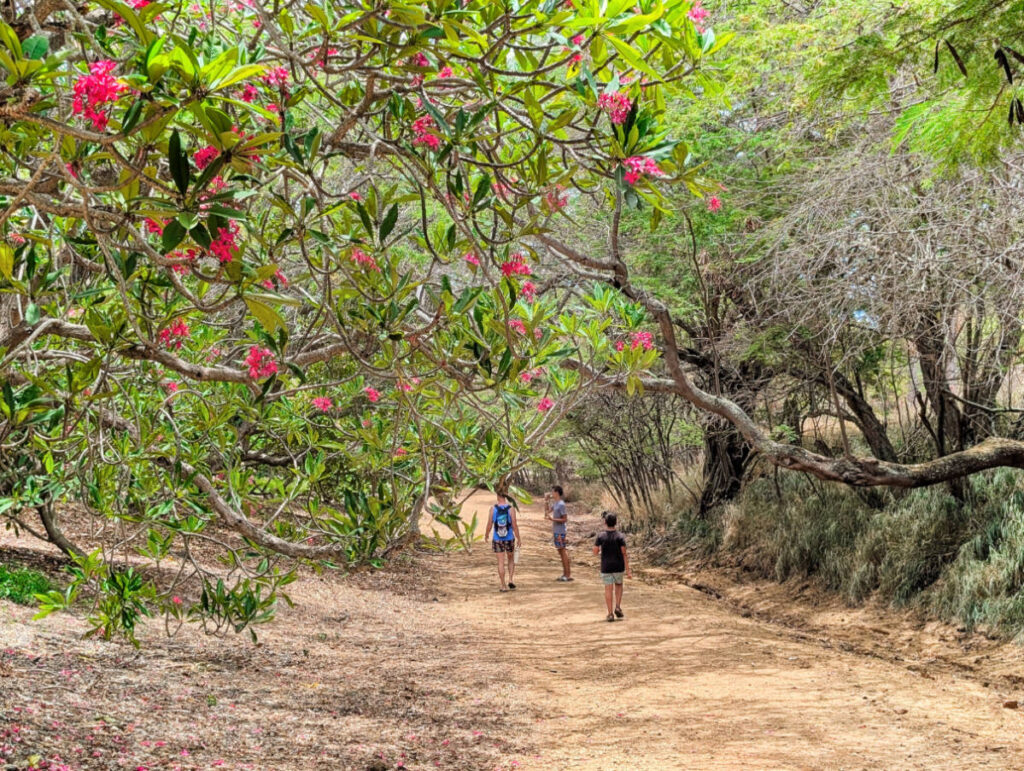
Why Visit the Koko Crater Botanical Garden
Since we visit a lot of botanical gardens, I’m confident in saying that we’re experts in the area. While we may not be expert botanists, we know when we come to a good garden. I like the Koko Crater Botenical Garden because it is so vastly different from any others you might visit in Hawaii. Located about a half hour from downtown Honolulu, the Koko Crater is a large extinct volcanic crater and in 1958 it was decided to turn a much of it into a botanical garden. I’m glad. Check out our article about doing the Koko Crater Rail Trail Hike!
Other Hawaiian botanical gardens you might visit, such as the Garden of Eden on Maui or the Limuhuli Gardens on Kauai, or even the Waimea Valley here on Oahu, are all very lush and moist. The plants of the Koko Crater Botanical Garden are all dry-land plants coming from very arid places. And in the crater, it’s surprisingly arid due to its microclimate.
The absolute highlight of the Koko Crater Botanical Garden is actually the very first thing you come across: the Plumeria Grove. Yes, although you think of plumeria (frangipani) as a tropical, moist climate plant, it’s actually a desert plant that thrives in dry places. Because Hawaii and the Florida Keys, where you see so many plumeria trees, are so wet the species are able to really do well in these climates. Here in the crater, the plumeria grove is INSANE and has so many color varieties and scents to enjoy. The plumeria I grow at our house are still young, so they aren’t epic. These specimen are absolutely epic and covered in flowers. Even if you don’t want to do the rest of the Koko Crater Botanical Garden, come visit just for the plumeria grove.
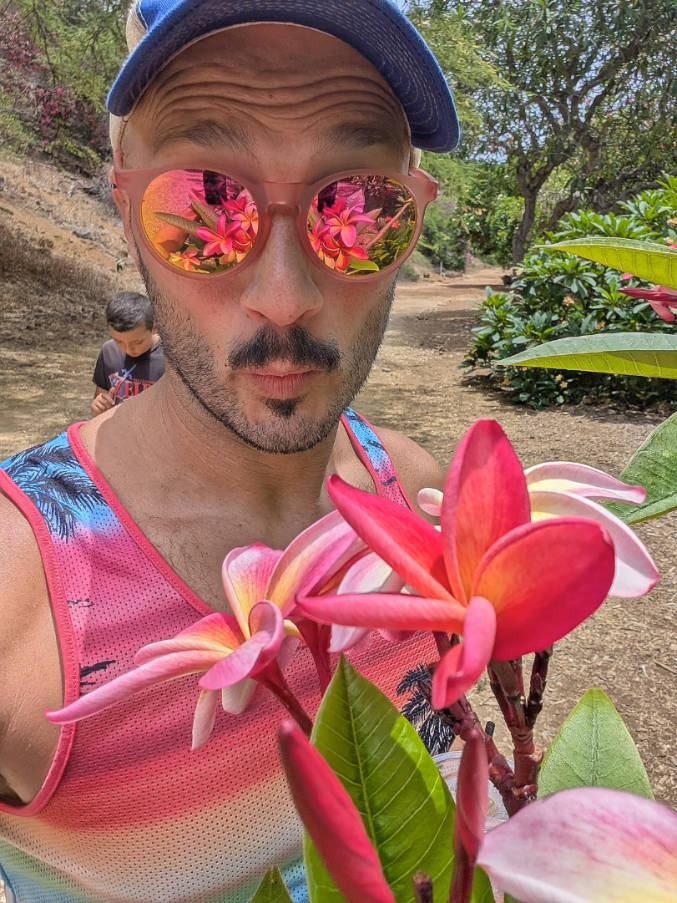
Tips for Visiting the Koko Crater Botanical Garden
When you’re here at the Koko Crater Botanical Garden, consider this a hiking visit. True, you can just arrive and do the small loop through the huge plumeria grove (and you’ll have no regrets), but if you want to do the full thing, there is a two mile loop trial that leads you through the different terrains of the Koko Crater to a variety of garden types. Whether you want to trek to the Madagascar section or you want to enjoy the collection of desert palms, that’s up to you. You can do the trail in whole or in part, and whichever you choose you’ll be able to easily get back to the start.
Allow yourself 45 minutes if you’re only planning on doing the plumeria grove walk, but give yourself at least two hours if you plan to do the full Koko Crater Botanical Garden loop. It’s not a difficult hike, but it’s hot in the crater and the path is uneven in parts. I think visiting this botanical garden is great with kids. It feels more like a flower forest and then a planetary landscape than a garden at times, and our kids thought it was pretty cool. If you’re visiting with kids, treat the Koko Crater Botanical Garden like a scavenger hunt. Have them look for each color in the rainbow, or see how many countries of origin they can find throughout the garden. There are ways to make it extra interesting for kids.
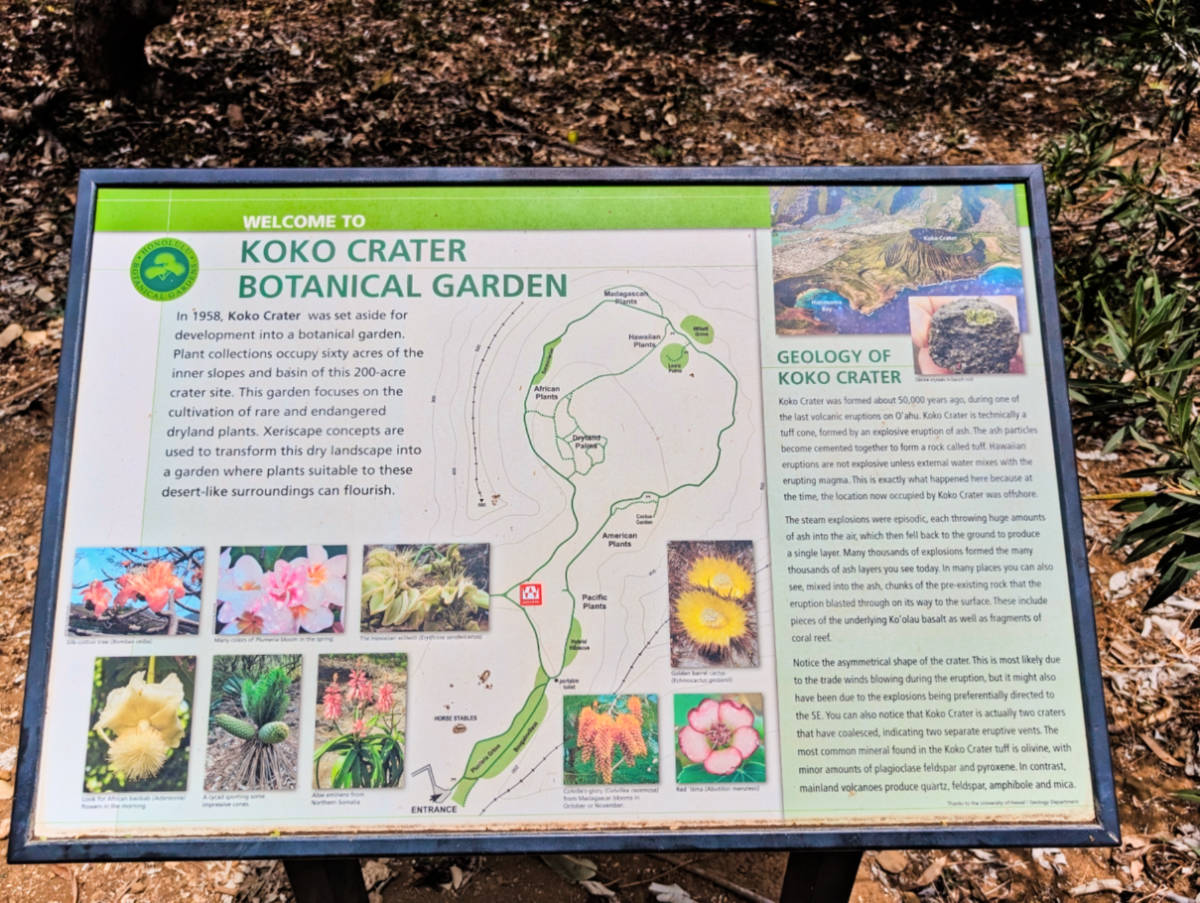
Being Prepared for Exploring IN the Koko Crater
If you didn’t pick up on it already, it’s hot and arid in the Koko Crater, so bring plenty of water, even if you’re only doing the plumeria grove walk. You’ll want it, especially if you’re doing the full two mile loop. Also, I like to bring a small umbrella for shade. While the plumeria grove offers a bit of cover from the sun, the rest of the trail is quite exposed and being in the crater makes the sun feel more focused. Wear the right shoes when you’re here, please. Sure you can wear slippers (flip flops) but hiking sandals or tennis shoes are much more appropriate. The trails are not paved and the rocks are small. Good footing is important, even if the elevation gain isn’t anything to write home about.
BRING YOUR CAMERA. There are so many varieties of plumeria that you’re going to want to photograph them all. Also, the bougainvillea on the hillsides and the distant trees from Africa are all so cool. And birds! The Koko Crater Botanical Garden is basically a bird sanctuary with all sorts flying about, including Brazilian cardinals, beautiful doves and lots of smaller birds that seem pretty unique. I haven’t seen any amakihi here (green honey creepers), but it’s the right sort of place to find them so keep your eyes peeled. This is a wonderful photography spot!
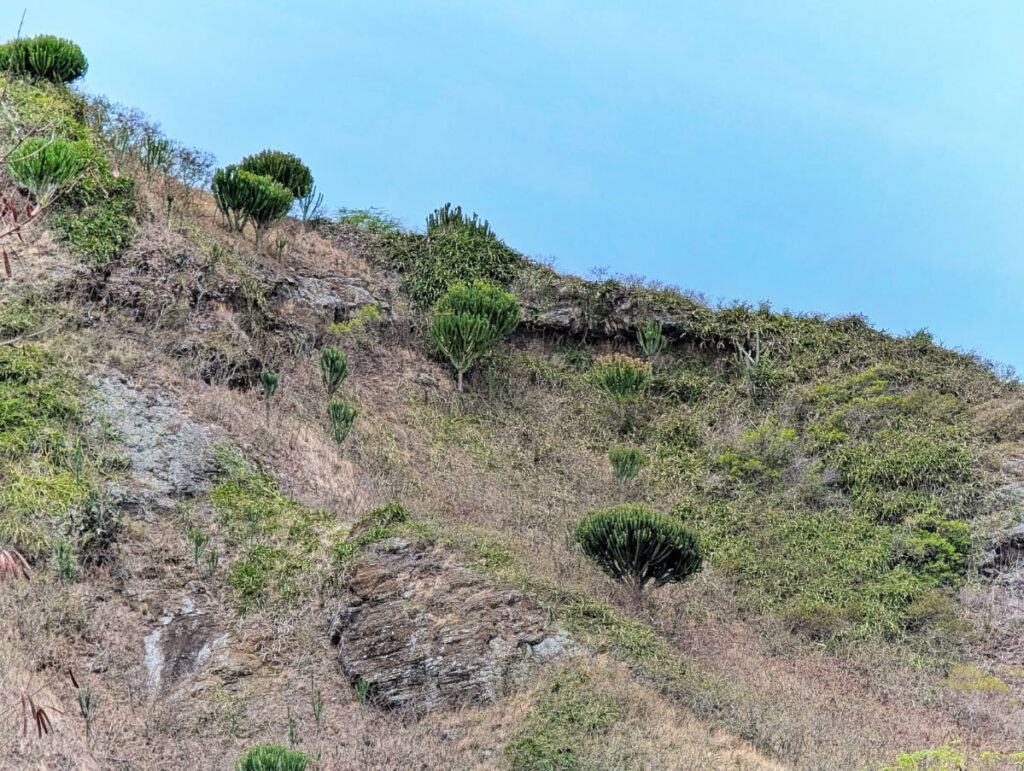
Parking at the Koko Crater Botanical Garden
There is plenty of parking at the Koko Crater Botanical Garden. You’ll drive past the golf course to a large, round parking area with shaded and sunny spots. Park respectfully and then enter the gardens through the gate. If it does happen to be busy enough that there aren’t spots in the lot, there is enough shoulder on the road in that you should be able to pull off to the side. Look for parking restriction signs though!
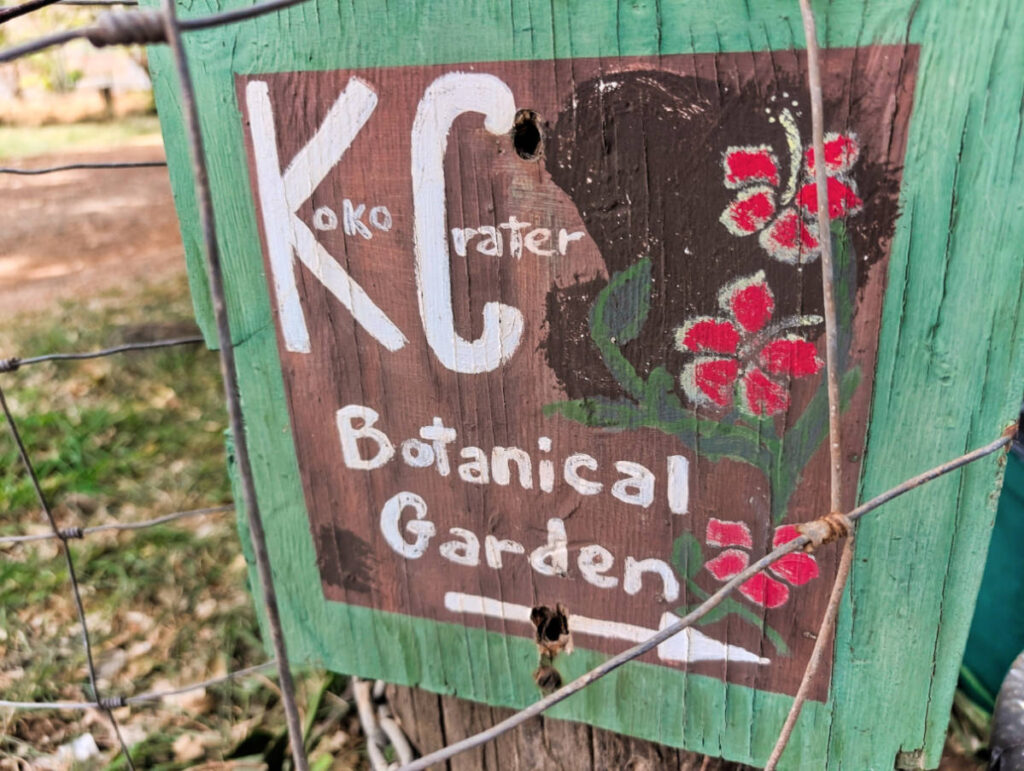
Botanical Garden Operating Info
To complete your planning, here is all the information to plan your visit, no matter how short it is (cuz any visit is worth it).
- Operating Dates/Season: everyday, sunrise to sunset
- Garden website: City of Honolulu
- Garden address: 7491 Kokonani St. Honolulu, HI 96825

More Things to do Around Oahu
Oahu is the most popular island to visit I would say, and for the most part it’s due to Honolulu, which is great for 2-3 days. We have family and friends in Honolulu, so it’s a quick pick when we’re choosing an island plan. There is actually a ton to do all around Oahu though, from the city to the North Shore to upcountry on the Kamehameha Highway. Here are our top picks to add to your trip to Oahu.
- visit the Polynesian Cultural Center
- do farm tours in upcountry (including Dole if you’re interested)
- hike Diamond Head (be sure to reserve your entry)
- visit Waimea Valley and Gardens
- snorkel at Shark Cove on the North Shore
- enjoy the beaches of Kaneohe Bay and Lanikai
- visit Pearl Harbor National Memorial
- tour Iolani Palace in Honolulu
There are loads of things to do and see all around the Island of Oahu, but these options are very easy to add to your visit no matter where you’re staying. Oahu is full of wonderful hikes too, so be sure to set aside time to hit the trails.
Here are some of our favorite Oahu things to do:
Where to Stay on Oahu
Where you choose to stay on Oahu is going to depend very much on your overall plans for you trip. While you can drive around the whole island in a day, you may not want to do that multiple times during a visit. If you’re able to split your time on Oahu between a stay on the North Shore and then a stay in Honolulu or on the South Shore, that is the best way to get a full experience here.
I hope you’ll consider visiting the Koko Crater Botanical Garden, even if only just for the amazing plumeria grove. It’s beautiful and is very different from most of the hikes you’ll find on Oahu. If you have any other questions about planning your time in Honolulu or visiting other gardens around Hawaii, please leave a comment or send us a note. We’re always happy to share more and help you plan a beautiful Hawaii trip. Aloha!
